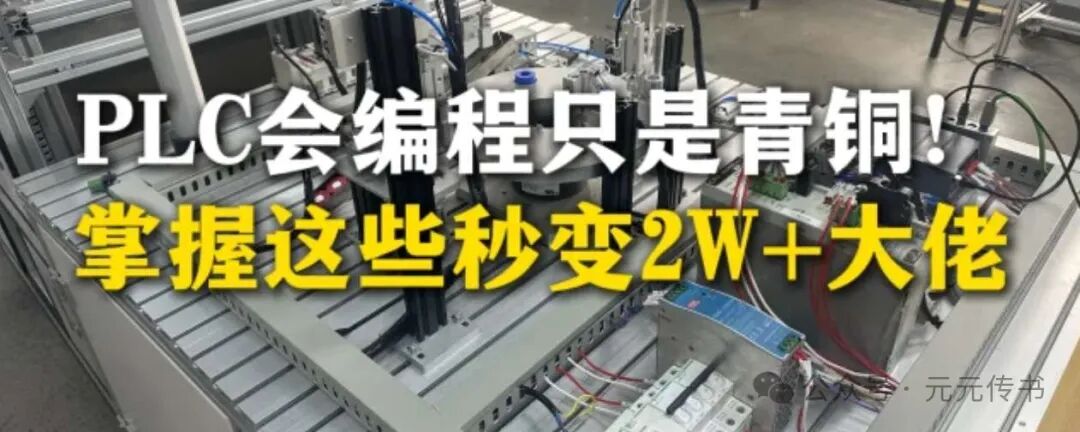
Introduction
**Hello everyone!** Today, I want to talk to you about a frequently overlooked but extremely important part of PLC programming —hardware programming interfaces. “Isn’t it just about plugging in a cable?” **You might think so. But I want to tell you that **choosing the right programming interface can improve your debugging efficiency by over 50%!** Want to know why? Keep reading!
Why is the choice of programming interface so important?
Imagine you are debugging a PLC program on the factory floor:
-
Scenario 1: The control cabinet is 3 meters high, and you need to climb a ladder to access the programming interface.
-
Scenario 2: The production line is running, and you need to monitor the program status online.
-
Scenario 3: The equipment is installed in an explosion-proof area, with very high safety requirements.
<span>Red</span>【In these cases, different programming interface choices can lead to completely different work efficiency and safety!】<span>Red</span>
Revealing Mainstream PLC Programming Interfaces
1. Traditional Serial Ports (RS232/RS485)
The classic choice that remains strong
-
Advantages: Extremely compatible, almost all PLCs support it.
-
Disadvantages: Slow transmission speed (usually only 115.2kbps).
-
Applicable Scenarios:
-
Maintenance of old equipment.
-
Long-distance communication (RS485 can transmit up to 1200 meters).
<span>Blue</span>【Tip: Many modern laptops have eliminated serial ports, so remember to carry a USB to serial adapter!】<span>Blue</span>
2. USB Interface
The convenient “plug and play” choice
-
Advantages:
-
Fast transmission speed (up to 12Mbps).
-
No additional power supply required.
-
Disadvantages:
-
Short transmission distance (generally no more than 5 meters).
-
Weaker anti-interference capability.
-
Applicable Scenarios:
-
Quick on-site debugging.
-
Program download/upload.
3. Ethernet Interface
The modern “all-rounder” choice
-
Advantages:
-
High-speed transmission (100Mbps/1Gbps).
-
Supports remote programming.
-
Can simultaneously achieve programming and HMI communication.
-
Disadvantages:
-
Requires knowledge of network configuration.
-
May be subject to network security restrictions.
-
Applicable Scenarios:
-
Distributed control systems.
-
Scenarios requiring remote maintenance.
4. Dedicated Programming Ports (e.g., Siemens MPI/DP)
The “customized” professional choice
-
Advantages:
-
High stability.
-
Supports multi-master communication.
-
Disadvantages:
-
Requires a dedicated adapter.
-
Higher cost.
-
Applicable Scenarios:
-
Debugging multiple Siemens PLCs.
-
Scenarios requiring simultaneous connection of HMI and programming devices.
How to Choose the Most Suitable Programming Interface?
Remember this golden rule:<span>Red</span>【Choose the interface based on the scenario, not based on habit!】<span>Red</span>
| Evaluation Factors | Serial Port | USB | Ethernet | Dedicated Port |
|———|——|—–|——-|——-|
| Debugging Speed | ★★ | ★★★★ | ★★★★★ | ★★★ |
| Distance | ★★★★★ | ★★ | ★★★★ | ★★★ |
| Cost | ★★★★ | ★★★★★ | ★★★ | ★★ |
| Safety | ★★★★ | ★★★ | ★★ | ★★★★★ |
<span>Blue</span>【Real Case】<span>Blue</span>: In a car manufacturing plant’s assembly workshop, engineers were used to using USB programming. However, after the equipment was installed, they found they needed to frequently climb up and down for debugging. After switching to Ethernet for remote programming, debugging efficiency improved by 60%, and safety risks were significantly reduced!
Multi-Interface Collaboration Techniques
Advanced Play:<span>Red</span>【Using interface combinations to achieve an effect greater than the sum of its parts!】<span>Red</span>
-
Ethernet + USB Combination:
-
Ethernet for long-term online monitoring.
-
USB for quick program downloads.
Serial Port + Ethernet Redundancy:
-
Ethernet as the main channel.
-
Serial port as a backup channel.
Dedicated Port + Ethernet:
-
Dedicated port for PLC-HMI communication.
-
Ethernet for programming and maintenance.
Common Problem Solutions
Q: What if there is only a serial port on site, but my computer doesn’t have one?
A: Use a USB to serial adapter,<span>Blue</span>【The key is to choose a reliable product with an FTDI chip!】<span>Blue</span>
Q: What if the Ethernet connection is unstable?
A:
-
Check the quality of the network cable (it is recommended to use shielded cables).
-
Set a fixed IP address.
-
Temporarily disable the firewall for testing.
Q: Will multiple programming ports connected at the same time cause conflicts?
A: Most PLCs support multiple interfaces working simultaneously, but **<span>Red</span>【It is recommended to use only one interface for write operations at the same time!】<span>Red</span>**
Future Development Trends
-
Wireless Programming: WiFi/5G interfaces are gradually becoming popular.
-
OPC UA over TSN: Industrial communication with stronger real-time capabilities.
-
USB4/Thunderbolt Interfaces: Ultra-high-speed data transmission.
Interactive Questions
-
What PLC programming interface do you use most often? Why?
-
What strange problems have you encountered related to programming interfaces?
-
If you could design the ideal PLC programming interface, what features would you include?
Conclusion
The choice of PLC programming interfaces may seem trivial, but it **<span>Red</span>【directly affects work efficiency and system reliability】<span>Red</span>**. Mastering the flexible application of multiple interfaces can help you navigate various complex scenarios with ease.Remember: There is no best interface, only the most suitable interface!
I hope this article helps you become a “choice master” of PLC programming interfaces! If you have any questions or experiences to share, feel free to leave a comment!
ShareBookmarkViewLike